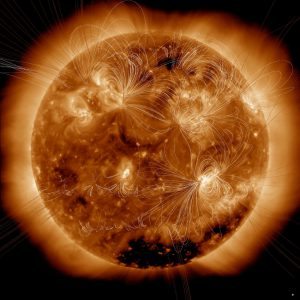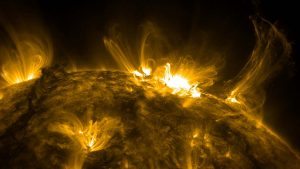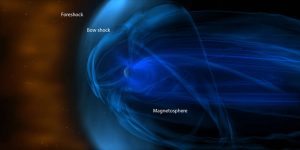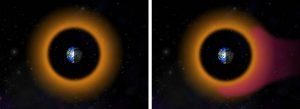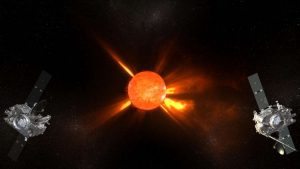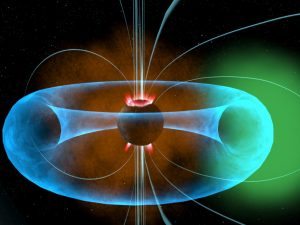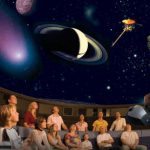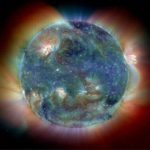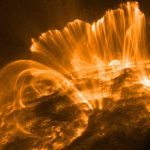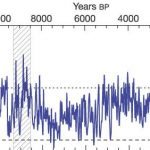The story of space weather can be told through a selection of pictures assembled from many different sources. They are suitable for Powerpoint presentations, too!
You may click on the below images for a larger version.
The sun consists of a gas of charged particles called a plasma that is heated to millions of degrees. The onion-like layering of the solar interior is due to changes in the temperature, energy transport and plasma density within the sun.
At the solar surface, convection amplifies the surface magnetic field and concentrates it into sunspots.
Sunspot magnetic fields look much like those surrounding a toy bar magnet, because all magnetic fields have the same general properties.
Sunspot magnetic fields form enormous loops of stored energy whose shapes are clearly revealed whenever luminous plasma flows up the magnetic field lines.
The entire solar surface is covered with loops of magnetism thousands of kilometers long, forming a ‘magnetic carpet’ of constant activity.
Sometimes, magnetic fields become so tangled as the plasma push them around, that they violently reform into new shapes to relieve the stresses. The stored magnetic energy, when released, heats local gases to millions of degrees, forming a solar flare.
At other times, even larger areas of the magnetic surface change their magnetic shapes and release energy. The billions of tons of plasma connected to these vast magnetic bubbles are carried away from the sun at millions of miles per hour as Coronal Mass Ejections.
Within a few days, if the CME is directed in the right way, it will arrive at Earth. Many of these clouds can be ejected by the sun every week, filling the inner solar system with an expanding, pinwheeling pattern of magnetic clouds.
The Earth has its own magnetic field, which we use compasses to navigate by. The magnetic poles of Earth are not fixed in space, but actually wander about at a pretty fast pace of nearly 10 kilometers each year.
Earth’s magnetic field also changes its intensity with time, and has actually reversed its polarity hundreds of times in the last 50 million years – a process called Magnetic Reversal. It happens invisibly, and does not cause any other effect we can experience on the ground.
On the ground, Earth’s magnetic field can be very uneven because of local concentrations of iron-rich ores. Prospectors use these magnetic clues to zero-in on new deposits to mine.
In space, Earth’s magnetic field resembles a vast comet-like shape called the magnetosphere, within which charged particles are steered and accelerated by Earth’s magnetic forces.
When Earth’s comet-like ‘magnetotail’ is disturbed by solar storms and CMEs, currents of charged particles from these regions pick up energy and flow into Earth’s Polar regions. As they encounter oxygen and nitrogen atoms, they cause them to fluoresce. This gives rise to the Northern and Southern Lights.
Solar storms also cause oxygen atoms to be ‘pumped’ out of the Polar Regions of our atmosphere, into polar fountains.
The oxygen ions mix with other plasma, and encircle the Earth in the Ring Current. It is an invisible Saturn-like ring of charged particles which appear during the most intense geomagnetic storms.
Solar storms, both flares and CMEs, can also affect the operation of satellites in space, cause high radiation dosages for astronauts working in space, and under some conditions, cause electrical power blackouts here on Earth.
The plasmasphere is an extension of Earth’s ionosphere into space. It consists of charged particles of mostly hydrogen that have been ionized by ultraviolet light from the sun. Solar storms can cause major changes in the density and shape of this tenuous region of the upper atmosphere.
More From SolarStorms.org:
Submit your review | |




